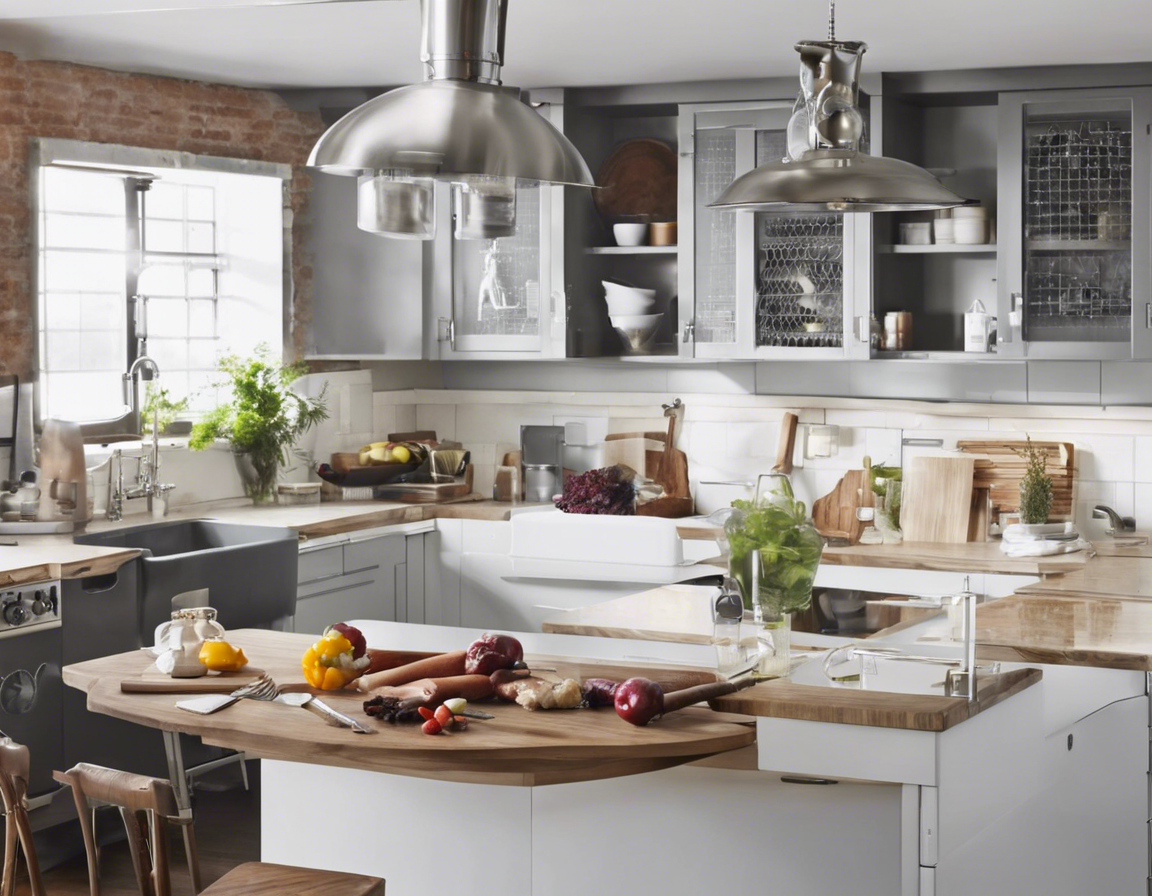Revamping Kitchens to Prevent Fatal Lung Disease
In recent years, there has been a growing concern regarding the quality of indoor air and its impact on our health. Poor indoor air quality can have serious consequences, including the development of respiratory diseases such as lung cancer, emphysema, and chronic obstructive pulmonary disease (COPD). One area in the home that is often overlooked in terms of air quality is the kitchen. Many kitchen appliances and practices can contribute to poor indoor air quality, leading to an increased risk of respiratory issues.
Understanding the Risks
Kitchen activities such as cooking can release harmful pollutants into the air. One of the most common indoor air pollutants is fine particulate matter, which can be generated by cooking with gas stoves or from burning food. Carbon monoxide, nitrogen dioxide, and formaldehyde are other pollutants that can be present in kitchen air, posing significant health risks when inhaled.
Key Steps to Improve Kitchen Air Quality
-
Proper Ventilation: Installing and using a range hood that vents to the outside can help remove pollutants from the air while cooking.
-
Switch to Electric Stoves: Electric stoves produce less indoor air pollution compared to gas stoves, making them a better choice for those concerned about air quality.
-
Regular Cleaning: Keeping the kitchen clean and free of dust and debris can help prevent pollutants from accumulating and circulating in the air.
-
Avoiding Toxic Cleaning Products: Some cleaning products can release harmful chemicals into the air. Opt for natural, non-toxic cleaners to minimize indoor air pollution.
-
Properly Store Chemicals: Store household chemicals and cleaning products in a well-ventilated area away from living spaces to prevent them from off-gassing and polluting the air.
Importance of Indoor Air Quality in Lung Health
Indoor air quality plays a significant role in overall lung health. Poor air quality can exacerbate respiratory conditions such as asthma and allergies, as well as increase the risk of developing more serious lung diseases over time. By taking steps to improve air quality in the kitchen and throughout the home, individuals can reduce their risk of developing respiratory issues and lung disease.
FAQs:
1. How does poor indoor air quality affect lung health?
Poor indoor air quality can lead to the development or worsening of respiratory conditions such as asthma, allergies, and COPD. Long-term exposure to indoor air pollutants can also increase the risk of lung cancer and other serious lung diseases.
2. What are some signs that indoor air quality may be poor in the kitchen?
Signs of poor indoor air quality in the kitchen include lingering cooking odors, excessive moisture or condensation, soot or fumes near gas appliances, and the presence of mold or mildew.
3. Can improving kitchen ventilation help reduce the risk of lung disease?
Yes, proper ventilation in the kitchen can help remove harmful pollutants from the air, reducing the risk of respiratory issues and lung disease.
4. Are there specific air purifiers that are effective in removing kitchen pollutants?
Air purifiers with HEPA filters are effective in removing fine particulate matter and other pollutants commonly found in kitchen air. Look for air purifiers specifically designed for smoke and odors for optimal performance in the kitchen.
5. How often should kitchen appliances be inspected for proper ventilation and maintenance?
Kitchen appliances should be inspected and maintained regularly to ensure they are functioning properly and not emitting harmful pollutants into the air. It is recommended to have gas appliances inspected annually by a qualified professional.
Improving indoor air quality in the kitchen is essential for maintaining healthy lungs and preventing respiratory diseases. By implementing simple changes and practices, individuals can create a healthier living environment for themselves and their families. Remember, healthy indoor air leads to healthy lungs.
